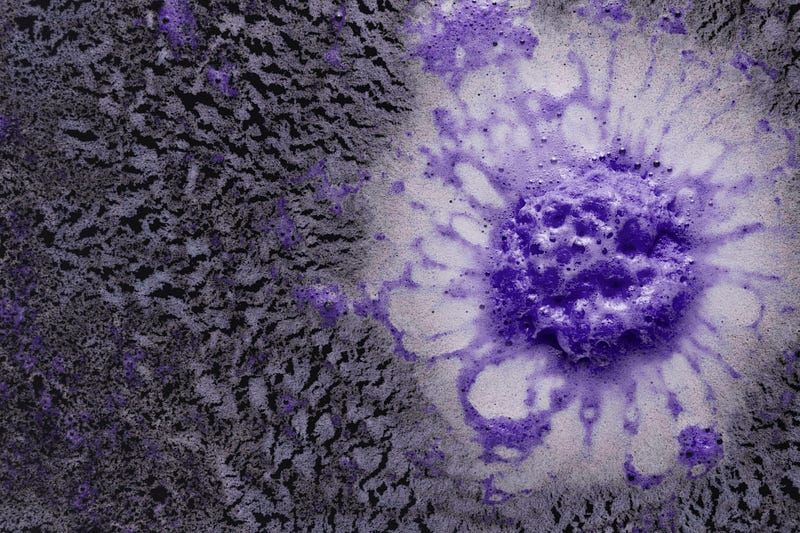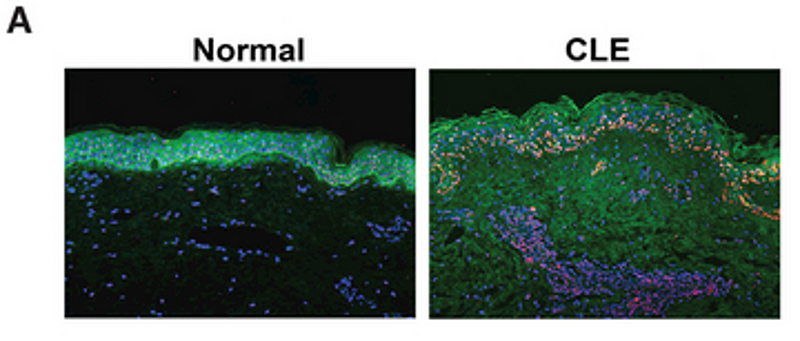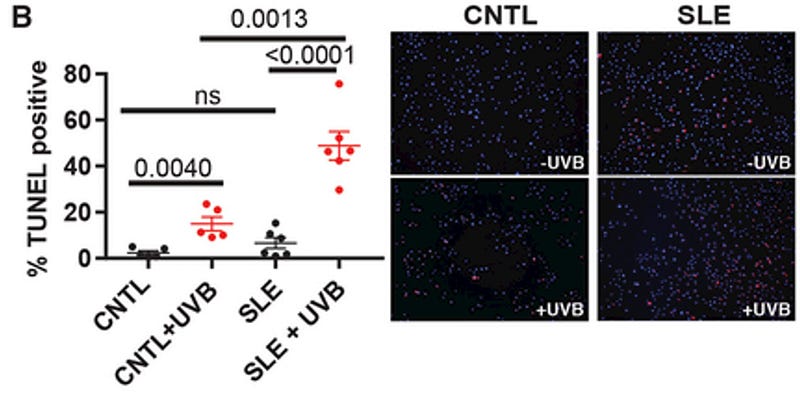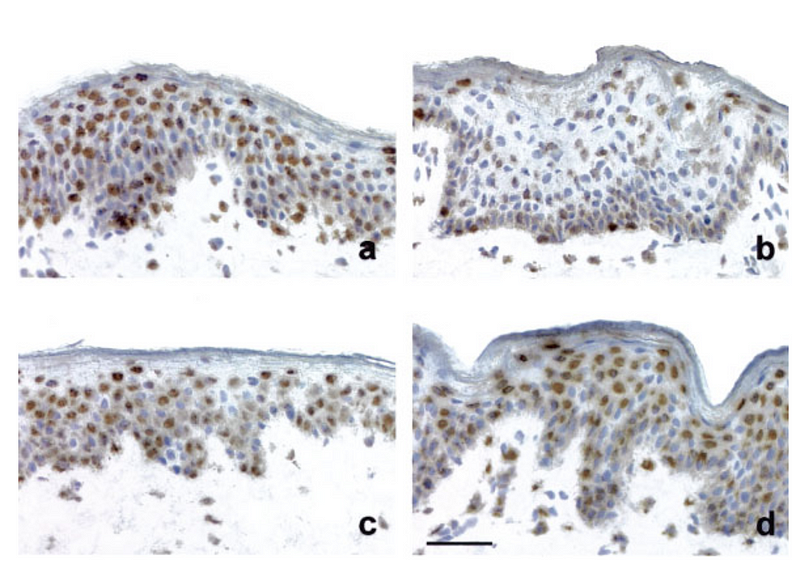Understanding Lupus: A Simplified Perspective on Disease Progression
Written on

Lupus is an autoimmune disorder that has intrigued medical researchers since the 1800s, resulting in a wealth of information available in scientific literature. However, due to its complexity, comprehending this information can be challenging, particularly for those without a background in immunology. The immune system's intricacies are so profound that there's a humorous anecdote about a cardiologist who would prefer death over listening to an immunologist explain it.
For the uninitiated, lupus occurs when the immune system mistakenly attacks healthy tissues, leading to symptoms such as skin rashes, joint or muscle pain, and potential organ damage. Both genetic and environmental factors can trigger this condition.
Having extensively researched lupus, I have found that the general information available online often falls short of detailing how the disease actually progresses. Consequently, I aim to present a common understanding of lupus progression at the molecular level, broken down into three straightforward sections.
This discussion will focus on the most significant components involved in lupus, rather than attempting to cover every relevant cell type.
Let's start with the aspect of cell death.
Part 1: The Consequences of Excessive Cell Death
Cells in our body are not permanent; billions die each day when they become unhealthy, aged, or dysfunctional and need to be replaced. This process, known as apoptosis, is a quiet form of cell death that does not trigger inflammation.
During apoptosis, the cell’s contents, especially genetic material like DNA, are carefully enclosed to prevent exposure to the immune system, as such exposure can lead to inflammation, swelling, and pain.
Once encapsulated, apoptotic cells send signals to nearby immune cells (like phagocytes), prompting them to locate, engulf, and digest the dying cells. This rapid process, termed “efferocytosis,” avoids recruiting additional immune cells from the bloodstream, thereby preventing inflammation.
While routine cell turnover usually occurs without issues, individuals with lupus tend to experience increased cell death, particularly when exposed to specific triggers. Sunlight is a notable trigger, especially for those with cutaneous lupus erythematosus (CLE).
Individuals with CLE exhibit heightened sensitivity to ultraviolet (UV) rays, often resulting in skin lesions shortly after sun exposure. Research indicates that skin biopsies from patients with CLE show a greater number of apoptotic cells compared to those from healthy individuals.

In experiments where living skin cells were exposed to UV radiation, skin cells from CLE patients demonstrated a higher susceptibility to apoptosis compared to those from healthy donors.

Part 2: Challenges in Cell Clearance
When cells die, their remnants need to be effectively cleared away. In addition to combating infections, the immune system is responsible for this cleanup.
The immune system consists of two primary components: the innate immune system, which acts as the first line of defense against pathogens and cleans up cellular debris, and the adaptive immune system, which deals with more complex threats, such as persistent viruses and cancer cells.
Research suggests that ineffective clearance of dead cells plays a crucial role in autoimmune conditions. For example, studies have shown that phagocytes in individuals with systemic lupus erythematosus (SLE) are less efficient at engulfing yeast cells, correlating with increased autoimmune symptoms.
Further investigations corroborated this. A 2006 study revealed that after exposing the skin of both CLE patients and healthy individuals to UV light, the number of apoptotic cells decreased in healthy subjects within 72 hours, while it remained elevated in those with CLE.

When phagocytes are overwhelmed and unable to clear apoptotic cells promptly, those cells can undergo secondary necrosis, losing their membrane integrity and releasing their contents. This can activate the adaptive immune system to assist in the cleanup.
Part 3: The Generation of Autoantibodies
Autoantibodies are critical for diagnosing lupus. A 2018 meta-analysis involving 62 studies with 13,080 SLE patients revealed that 96% had at least one type of autoantibody present in their blood.
B-cells are key players in this process, as they are responsible for producing antibodies and are integral to the adaptive immune response. However, the mechanisms behind how B-cells interact with apoptotic cell remnants remain unclear. A 2002 study provided some insights into this process.
B-cells reside within lymph nodes, particularly in the germinal center (GC). To enter circulation, they must first undergo a selection process. During this process, dendritic cells (DCs) present antigens to B-cells; if a B-cell binds to an antigen, it becomes activated, replicates, and is released to target the corresponding threat.
In the 2002 study, researchers examined lymph node biopsies from SLE and non-SLE patients and found that SLE samples contained unengulfed apoptotic cells and a lack of phagocytes in the GC. Additionally, they discovered that apoptotic cell remnants were bound to DCs, an observation not seen in non-SLE samples.
This suggests that when apoptotic cells undergo secondary necrosis, DCs may pick up their released contents and present them to B-cells, stimulating the production of autoantibodies. However, how these B-cells evade destruction during their maturation remains a mystery, as B-cells that react to autoantigens are typically eliminated before they mature.
The adaptive immune response is inherently inflammatory, as immune cells, including B-cells, release inflammatory mediators to recruit more immune cells. Under normal circumstances, inflammation resolves once the threat is eliminated. In lupus, however, the abundance of autoantigens from accumulated apoptotic cells leads to chronic inflammation.
Lupus: A Progressive Condition
In 2003, researchers at the Oklahoma Medical Research Foundation analyzed blood samples from 130 members of the US Armed Forces diagnosed with lupus. These samples were sourced from the Department of Defense Serum Repository, which stores blood samples from personnel upon enlistment and every two years thereafter.
When the researchers screened for autoantibodies in these samples, they made a surprising finding: 88% of the individuals had at least one type of SLE autoantibody in their blood up to nine years before their formal diagnosis. This suggests that the presence of autoantibodies may precede the appearance of clinical symptoms by several years.
Interestingly, only 3.8% of matched control subjects—who exhibited no lupus symptoms or diagnosis—tested positive for one or more autoantibodies, indicating that a certain threshold may be required to elicit clinical symptoms.
Moreover, the study authors noted that the number of different autoantibody types continued to rise until the time of diagnosis and treatment. They concluded that SLE results from a series of autoimmune abnormalities that may begin as isolated immunological events and subsequently proliferate into a significant clinical condition.
Thank you for reading this overview. If you appreciate my work, consider subscribing to my Medium email list. Your support is greatly appreciated.